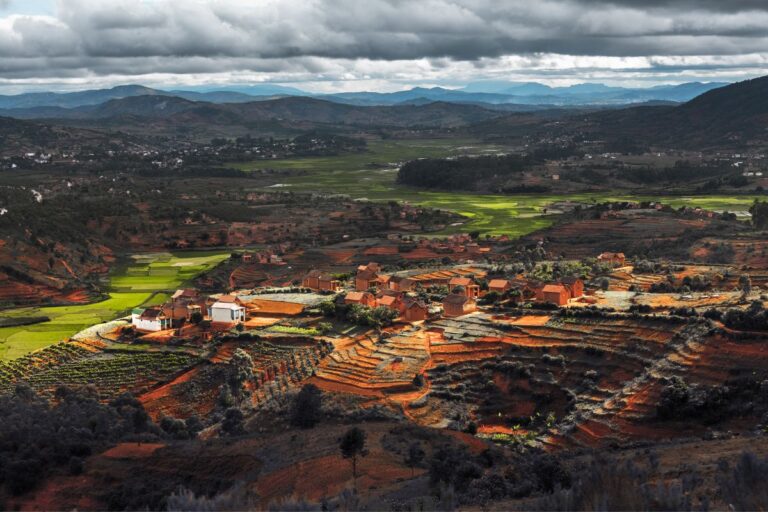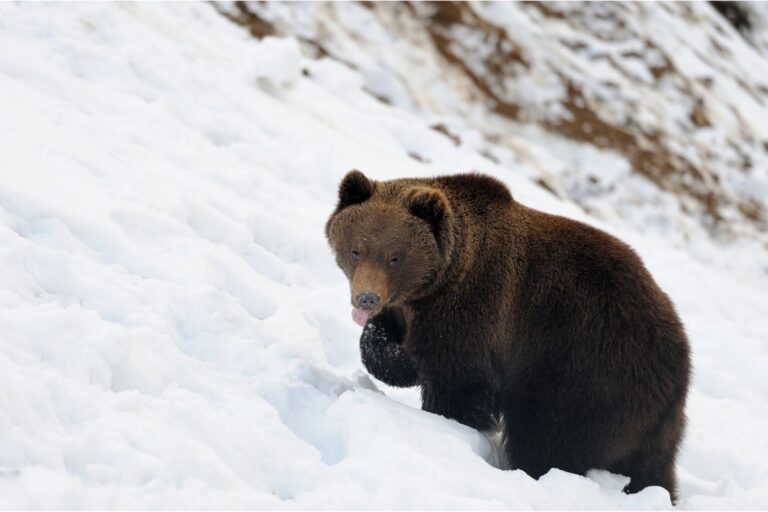Forest Animals (Interesting Facts of Animals That Live in The Forest)
Last Updated on November 10, 2023 by Shu
It can be difficult to live in the jungles, but not for the forest animals. However, as a result of some extremely specific adaptations, our forests are home to a plethora of beautiful wildlife. Let’s explore some of the most interesting animals that live in the forest.

Evolution is the driving force behind all life on Earth, causing a wide variety of animals to adapt in order to live. After centuries of evolution, Shrubs, plants, and animals are inseparable. Let’s learn a list of animals that are found in the forests.
Common Forest Animals (List of Animals That Live In The Forest)
The forest is the natural habitat for a diverse range of animals, including bears, deer, foxes, squirrels, beetles, spiders, owls, and wolves.
Different animals that live in forests have adapted to thrive in the dense vegetation and varying terrain of the forest, utilizing their keen senses to hunt for prey and evade predators.
Some species’ diets are herbivores, while others, like the wolf and fox, are carnivores. Each of these common animals of the forest plays a vital role in maintaining the delicate balance of the ecosystem.
Bobcats
The bulk of the planet’s bobcats live in the United States, although they can also be found in Mexico and southern Canada.
Bobcats are extremely versatile and may survive in a broad range of environments, spanning boreal coniferous and varied forests in the northwest, bottomland oak woods and coastal wetlands in the south, and desert and savannahs in the southwest.
The Bobcat is a lonely and nocturnal species that is most mainly nocturnal, hunting primarily around dawn and dusk. Throughout the day, Bobcats rest and repose in rock crevices or hollow trees, with one individual having several nests within its home area.
These nocturnal cats hunt on smaller animals, particularly rabbits and hares, and have been known to take larger prey such as white-tailed deer.
Bears
Bears are a select minority of primarily huge omnivorous mammals that inhabit all over the planet in woods, highlands, tundra, deserts, and grasslands. Even though bears come in a variety of shapes and sizes, all bear species have some characteristics.
They all have stout bodies covered in fur, stumpy legs, and a round skull with a large nose.
Brown bears are more common than black bears. When the weather turns chilly in the Northern Hemisphere, many bears hibernate. Hibernation is a profound sleep that permits a bear to go for extended periods of time without eating.
The majority of bears live alone and only interact with their cubs. Most bears are usually active throughout the day and walk in the woods, except when they come into contact with humans on a regular basis.
Bat
Bats are active at night and many species of bats can be found in forests. They use echolocation to locate prey, emitting high-frequency sounds that bounce off objects and return to the bat’s ears.
By analyzing the time it takes for the sound waves to return, bats can determine the location, size, shape, and texture of their prey.
This amazing ability allows bats to hunt in complete darkness and even in cluttered environments, such as dense forests. Some bats can also adjust the frequency and intensity of their calls to better locate specific types of prey.
Overall, echolocation is a crucial tool for bats to efficiently find and catch their prey, showcasing the fascinating adaptation of these remarkable creatures.
Deer
Observing a deer in the wild is a thrilling experience, particularly if you happen to come across one close to your home. They frequently sleep along the roots of trees to take advantage of the shade and protection they offer. Deer prefer areas with thick stands of trees as well as other coniferous vegetation.
Many deer may dwell in tight proximity within extremely dense forests containing coniferous trees. They’re like all living things, require a steady supply of water to exist. Most of them prefer to congregate near a large, regular source of water, such as a lake or river.
Hedgehog
Hedgehogs can be found living in forests. They prefer areas that provide them with ample hiding spots and a good source of food such as insects, small mammals, and plants.
Although they have sharp quills as a natural protection, forests offer them protection from predators and harsh weather conditions. Hedgehogs are known to make cozy nests underneath fallen leaves and logs, making the forest a suitable habitat for them to thrive in.
Hornbill
Hornbills are commonly found in tropical rainforests, where they build their homes in tree cavities.
They require large, undisturbed areas of forest to thrive and rely on a diverse range of tree species for food and shelter. They are highly adapted to forest environments and are considered an important indicator species for the health of these ecosystems.
Koala
Koalas primarily live in eucalypt forests along the eastern and southeastern coast of Australia. These trees provide them with the majority of their diet, as koalas feed on eucalyptus leaves.
These cute animals are an endangered species due to deforestation. The forest habitat also offers koalas protection from predators and shelter in the form of tree branches and trunks.
While they may roam to adjacent woodlands and grasslands, koalas are most commonly associated with their forest home.
Monkey
Many species of monkeys are found in various types of forests around the world, including tropical forests, and montane forests. The forest provides monkeys with the necessary habitat, food sources, and protection from predators.
Arboreal animals are well-adapted to forest life, using their agility and intelligence to navigate the dense vegetation and find the resources they need to survive.
Moose
Mooses are mostly found in the boreal forests of North America, Scandinavia, and Russia.
These massive animals have long, powerful legs that help them navigate through dense vegetation and rough terrain.
They prefer living in areas with abundant vegetation and water sources, which makes the forest environment an ideal habitat for them. Moose are herbivores and rely on the forest for their food and shelter needs.
Owls
Owls are often found living in forests. They prefer wooded areas with plenty of trees and dense foliage for hunting and nesting.
Forests provide a great habitat for owls because they offer plenty of prey like rodents, insects, and small mammals. The trees also provide shelter and nesting sites for the owls. Forests also provide a sense of seclusion and darkness, which is perfect for the nocturnal lifestyle of these amazing birds.
Raccoons
Raccoons prefer to reside in forested areas or forests, ideally near a natural body of water. They like deciduous woodlands that have plenty of trees to provide cover. They can also be found in mountainous locations, wetlands, and densely forested areas.
Raccoons are highly adaptable mammals that may be found in many parts of the world. They are most widespread in North America, especially in the United States and Canada. They can also be found in Asia, South America, and Europe.
Raccoons do not dwell in trees, contrary to popular belief. Throughout the day, you may have noticed them sleeping on trees. Raccoons, on the other hand, do not reside in trees. They simply seek protection and may nest in hollowed trees.
Raccoons are excellent climbers, using their teeth and claws to quickly ascend trees. From there, they frequently jump onto a building’s roof, where they can obtain access to crawl spaces and have babies.
Skunks
Skunks are medium-sized animals that thrive in forested areas, particularly the dense forests of North America. They’re most active in the evenings and throughout the night when they use the cover of darkness to help them catch prey such as plants and small animals.
Skunks are probably most well known for their unique skill – spraying perceived threats with a shower of pungent and stinky liquid. This liquid is produced in the skunk’s glands which are located just under its tail.
This will only happen if the skunk feels under threat, and is used as a warning signal to predators. So, if you ever see a skunk perched on its hind legs ready to spray – stay back! A skunk’s spray is extremely strong, and can even be smelled from up to half a mile away!
Squirrels
Squirrels are members of the Sciuridae family, which includes small to medium-sized rodents that are recognizable to practically everyone in the globe save Australia.
The Sciuridae family has about 250 different varieties of squirrels, which are classified into three types: tree squirrels, ground squirrels, and flying squirrels.
Squirrels, like some other mammals, have 4 front teeth that develop continually to prevent wear from chewing. Because they are most energetic throughout the day, tree squirrels are the most easily identified. They are frequently the only wild creatures that most individuals see in cities.
Sloth
Sloths primarily live in the rainforests of Central and South America, where they spend most of their time in the trees.
These slow-moving mammals are well adapted to their arboreal lifestyle, with their long claws and strong limbs enabling them to hang effortlessly from branches.
They are also highly specialized for their environment, with their fur hosting algae that helps to camouflage them in the green canopy. Sloths are most commonly found in countries like Brazil, Costa Rica, and Panama, where they can be seen lounging in the treetops.
Woodpeckers
A woodpecker is a little bird that is well-known for possessing a powerful bill that it uses for drilling and pounding on trees. Woodpeckers can be found almost anywhere on the planet.
These birds have adapted to a variety of habitats, including woods, deserts, swamps, and even urban areas. Some woodpeckers may live in locations where there are no trees, but they favor deep forests.
Woodpeckers normally live alone and still get together throughout their nesting season, when they form pairs. This bird species primarily inhabits the same region and prefers to dwell alone in woodlands rather than in groups.
Woodpeckers interact with one another in a unique technique known as tapping to make a woodpecker call. These creatures use their bills against a harder surface to make a sequence of pounding sounds called woodpecker noises, which aids them in communication.
Woodpeckers do it to lure a partner or to mark their territory. Woodpeckers do not pose a threat to humans. They harm trees by drilling and banging into them. Even though they do not harm humans, they can do significant damage to property.
Wolf
Yes, wolves do live in the forest. Forests are one of the primary habitats for wolves.
These animals are highly adaptable and can be found in a variety of forest types around the world, from the dense coniferous forests of North America to the mixed deciduous forests of Europe and Asia.
The forest provides the wolves with ample cover for hunting and protection, as well as a steady supply of prey such as deer, rabbits, and rodents.
Additionally, the interconnectedness of the forest ecosystem allows wolves to thrive, as they play a vital role in maintaining the balance of the food chain. Therefore, the forest is an essential environment for the survival of wolves.







